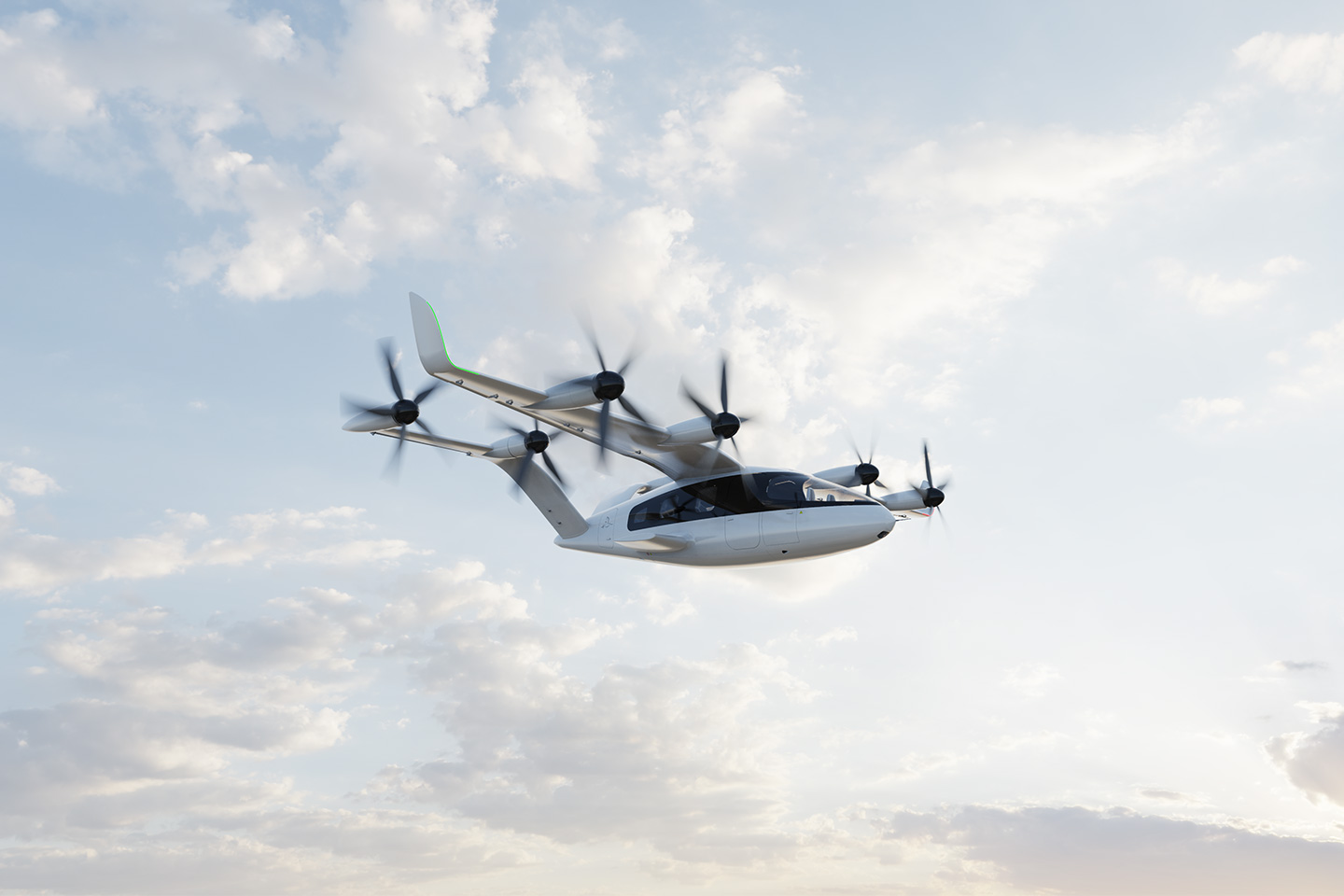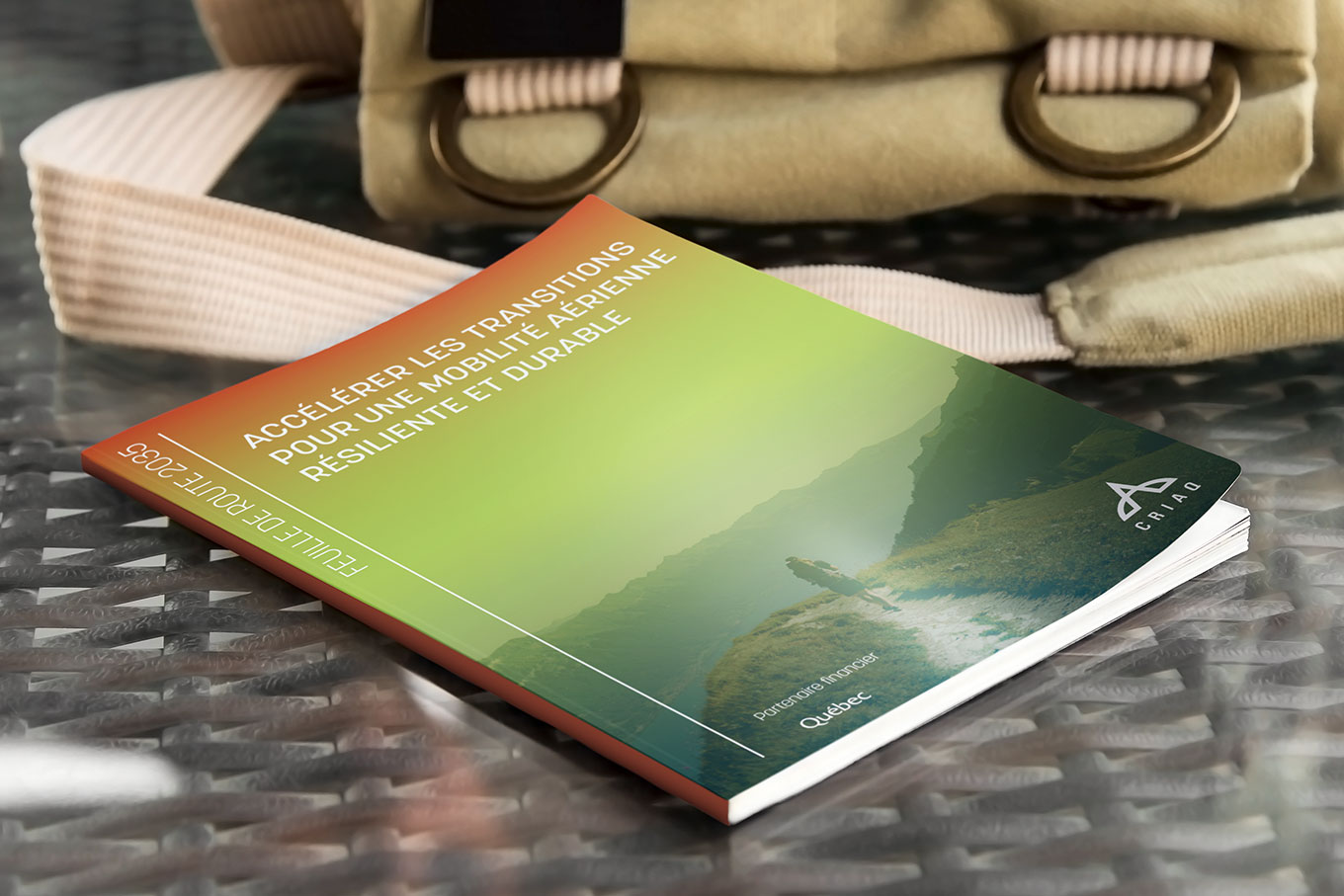Funded project completed
Exploring-Innovation
3.4
Development of Global Model Parameter Estimation Technology
Digital aviation systems
For the aerospace research and innovation ecosystem of Quebec and Canada, CRIAQ’s Roadmap 2035 represents the commitment of the industry, research community and governments to meet the challenges posed by climate change and those linked to a safe evolution of air mobility.
3 major vectors of technological change and transition highlight the key issues to be addressed by researchers and innovators.
Each of these outlines its own challenges and courses of action, based on the technological clusters and trajectories to be explored to guide research and innovation and accelerate transitions towards 2035 and beyond.

CRIAQ is committed to mobilizing and stimulating the ecosystem through R&D programs and targeted initiatives to drive concrete change towards resilient, integrated and sustainable air mobility – project by project.
Aimed at driving sustainable aerospace, it is structured around 4 pillars to strengthen the research and innovation ecosystem and stimulate partnerships between industry, universities, colleges and research centers in Quebec, Canada and internationally.
Read the Strategic Plan SummaryThe strength of Quebec’s aerospace industry lies in the large number of prime contractors, equipment manufacturers, suppliers, and specialized subcontractors. It forms a truly world-class ecosystem, whose members have established close ties through large-scale collaborative projects.
CRIAQ’s mission is to increase competitiveness by stimulating business innovation through collaborative R&D, technology demonstrations for SMEs and large-scale demonstrations.
Discover the Quebec Aerospace Strategy - Horizon 2026One of our tools for implementing the Roadmap 2035 is the RDV Forum, one of the aerospace industry’s flagship events. Dedicated to innovators ready to meet the challenges of tomorrow’s air mobility: sustainable, digital, and integrated, it enables the acceleration of technological developments.
To meet the challenges of today and tomorrow, the RDV Forum creates and supports interdisciplinary and cross-sectoral cooperation. It’s an opportunity for industry and research to come together, exchange ideas and collaborate on innovative projects.
Discover CRIAQ's RDV Forum01.
Rally the ambitions of the industry and the research community to develop the knowledge and skills needed by the next generation of innovators and entrepreneurs.
02.
Emphasize the engagement of all partners to accelerate commitments towards resilient and sustainable air mobility to achieve carbon neutrality goals.
03.
Support the deployment of new call-for-ideas programs, project solutions and multidisciplinary, cross-sectoral research programs.
04.
Accelerate the much-needed expansion and consolidation of SMEs and start-ups.
05.
Stimulate public and private investment in Quebec and Canada.
06.
Align investments to stimulate productivity through research and innovation, by promoting the creativity, training, maturation, demonstration and commercialization of innovations.
International civil aviation players are mitigating current challenges by stimulating targeted and collective actions to achieve ambitious global targets for limiting CO2 emissions and achieving carbon neutrality by 2050.
With research and innovation projects of varying size and technological maturity, CRIAQ aims to contribute to these efforts to develop and demonstrate integrated aeronautical technologies towards deep decarbonization while guaranteeing safety and security.
Examples
Using AI to optimize trajectories, new aircraft systems, fuel cells for airport ground power.
Examples
Hydrogen at airports for ground transportation, safety aspects and certification (hydrogen), model-based validation and certification.
Examples
Optimized sustainable air operations and networks (MRO), air traffic management.
Examples
Key technologies (e.g. distributed propulsion), enabling technologies for aircraft integration, integrated technologies for climate-neutral regional aircraft.
Examples
Development and integration of propulsion systems, sustainable fuels, with or without additives, new energy carriers, high-power fuel cells.
Examples
Integration of hydrogen-powered aircraft, hydrogen propulsion systems.
Examples
sustainable manufacturing technologies, multidisciplinary digital twins (full lifecycle), embedded sensors, communication platforms.
Examples
hydrogen for metal and steel production (replaces fossil fuels in industrial processes with a high carbon footprint), reducing GHG impact on the life cycle of aircraft materials. Aviation’s impact on climate excluding CO2.
Examples
Sustainable life-cycle technologies.
Examples
Airframe and cabin technologies, modular aircraft configurations reducing environmental impact and noise footprint during take-off and landing.
Examples
Developing technologies for improved local air quality (LAQ), models for highly accurate measurements, platform integration.
Examples
Ecosystem technologies (health, cybersecurity).
Inventing tomorrow’s aviation offers an opportunity to embrace sustainable solutions and rethink air mobility. The emerging urban and interurban air mobility offers new avenues for development in transportation for decision-makers and stakeholders who can effectively harness them.
In addition to ongoing and planned projects on the development and demonstration of vertical take-off and landing technologies, calls for projects are launched to design, build, and operate these types of vehicles within an integrated transport system, which must be socially accepted and safe.
Examples
Reservation platforms for all modes of transportation, interoperability.
Examples
Purchasing a travel experience instead of a ticket (price difference), new travel options based on personal situations (e.g., passengers with reduced mobility).
Examples
Urban taxis, airport shuttles, interurban flights.
Examples
Electric propulsion drone deliveries (e.g., passenger luggage), support for industrial supply chains, infrastructure inspections assisted by drones.
Examples
Drones and satellites for rescue missions, ground observation, and humanitarian and medical prevention/interventions.
Examples
Autonomous systems, drone certification, positioning, and coordination systems for autonomous units.
Examples
Charging, storage in new urban landing stations, constellation management.
Examples
Landing stations connecting to airports, new networks, and infrastructures.
Examples
On-demand and regular maintenance and repair operations.
Examples
Communication systems, cybersecurity.
Examples
Enhanced digital network, bands, 5G/6G, Zero Latency communications.
Examples
Air traffic management, dynamic and optimized flight corridors, interoperability (multi-orbit, multi-frequency, multi-service).
Examples
Drone control and piloting centers.
Aviation is quickly transitioning to digital, becoming a driving force for transformation and profound evolution within our ecosystem. Several existing and new activities provide companies with significant opportunities for innovation through digital solutions.
CRIAQ dedicates specific resources to organize technological development activities supporting both existing and new niches in the value chain of integrated digital aviation systems. Stakeholders from the aerospace ecosystem as well as from other digital technological sectors are participating in technological research and innovation projects.
Examples
Quality inspection assisted by augmented and virtual reality, trajectories optimized by AI, in-flight safety enhancement through AI pilot assistance.
Examples
Digital control tower and piloting.
Examples
Data lakes, on-board and on-site communication sensors/platforms (satellite/drone/plane – ground segment), cloud info and data infrastructures.
Examples
Common database and AI infrastructure.
Examples
Digital and virtual collaborative network, demonstration and certification platforms.
Examples
Multidisciplinary digital twins covering the entire aircraft life cycle, predictive analysis (supply chain, MRO).
Examples
New products and services powered by AI impacting productivity, efficiency, automation, and costs.
Examples
Digital aircraft: design and manufacturing – operations and recycling, acceleration of the aircraft development process.
Examples
Examples – Physical digital demonstration aircraft at scale for education and R&D, digital twins, digital factory.
Examples
Technologies, resilience models for aeronautical systems (extreme weather conditions, cyberattacks), connected aircrafts for flight trajectory management and security.
Examples
AI certification for aviation, new methods, tools, and digital certification processes, technologies…

Cancel